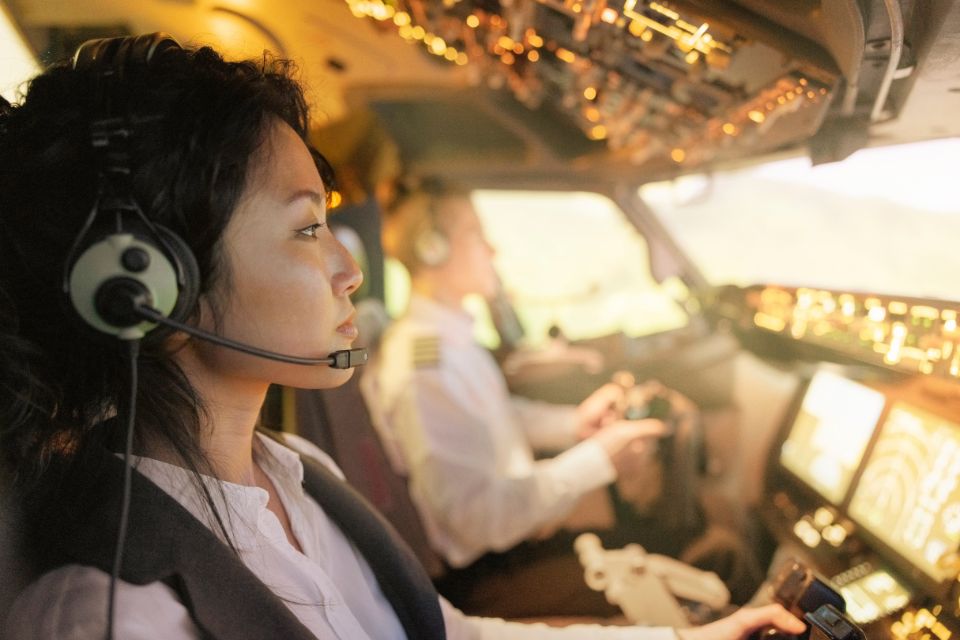
Harnessing Mindfulness: A Student Pilot’s Guide to Concentration
When you’re up in the sky, the cockpit is your sanctuary. It’s where your focus needs to be sharper than the leading edge of a wing. Mindfulness isn’t just a buzzword; it’s your co-pilot in maintaining concentration amidst the clouds. Let’s chart a course to mental clarity and see how mindfulness can elevate your pilot training.
Key Takeaways: Article-at-a-Glance
- Mindfulness training can significantly improve a pilot’s focus and reduce stress.
- Deep breathing exercises are a pilot’s first line of defense against tension.
- Regular meditation can enhance situational awareness and cognitive function.
- Yoga can help pilots maintain both physical flexibility and mental resilience.
- Technology, when used mindfully, can support pilots in their mental training.
The Role of Mindfulness in Aviation Training
Imagine you’re flying through turbulent weather. Your heart races, your palms sweat, but there’s a tool that can help you stay calm and collected – mindfulness. It’s the practice of being present in the moment without judgment. In aviation training, mindfulness is your silent ally, helping you manage stress and make clear-headed decisions. It’s about being aware of your thoughts and surroundings without letting them control you.
Think of mindfulness as a muscle. The more you work it, the stronger it becomes. For student pilots, this means better focus during flight planning, smoother handling of in-flight challenges, and a cool head in emergencies. It’s not just about being a better pilot; it’s about enjoying the journey, one flight at a time.
How Mindfulness Enhances Pilot Focus
Focus is the cornerstone of flying. It’s what keeps you aligned with the runway on final approach and aware of your altitude during a steep turn. Mindfulness enhances focus by training your brain to zero in on the task at hand. It’s like tuning a radio to the clearest frequency – mindfulness clears the static of distractions, allowing you to listen to what’s important: your aircraft, your environment, and yourself.
- Reduces pilot error by improving attention to detail.
- Increases the ability to cope with unexpected events.
- Helps maintain composure during high-pressure situations.
- Sharpens memory recall which is crucial for checklists and procedures.
- Boosts overall mental well-being, making flying more enjoyable.
By incorporating mindfulness into your training, you’re not just preparing to fly; you’re preparing to excel in the skies with unwavering focus.
Core Mindfulness Practices for Pilots
Core mindfulness practices are the bedrock of a focused mind. They are the tools you’ll use to build the mental fortitude required to pilot an aircraft. These practices are not just for the times when you’re airborne; they’re designed to be woven into the fabric of your daily life. By doing so, you’ll find that your ability to maintain focus and remain calm under pressure becomes second nature.
Understanding Deep Breathing Exercises
Let’s start with the basics: breathing. It’s something we do every moment of our lives, but how often do you pay attention to it? Deep breathing exercises are a pilot’s stealth weapon against stress. They’re simple, can be done anywhere, and the benefits are immediate. Here’s how you can start:
Sit comfortably with your back straight.
Breathe in slowly through your nose, feeling your stomach expand.
Hold your breath for a few seconds.
Exhale slowly through your mouth, feeling your stomach fall.
Repeat this process for a few minutes, focusing solely on your breath.
This exercise is your emergency oxygen mask for the mind. It can be done pre-flight, in-flight (when safe to do so), and post-flight. Deep breathing not only calms the mind but also oxygenates the blood, leading to better brain function and sharper decision-making skills.
Implementing Meditation in Daily Routines
Think of meditation as your mental pre-flight checklist. It’s a way to ensure your mind is prepped and ready for the demands of flying. Integrating meditation into your daily routine isn’t complicated. Start with just five minutes a day. Find a quiet spot, sit comfortably, close your eyes, and focus on your breath. When your mind wanders, gently bring it back to your breathing. This simple practice can greatly enhance your focus, reduce anxiety, and improve your overall performance in the cockpit.
- Choose a consistent time each day for meditation to build a habit.
- Use guided meditations if you’re new to the practice.
- Incorporate visualization techniques, picturing successful flights.
- Gradually increase the time you meditate as you become more comfortable.
- Remember, the goal is progress, not perfection.
Regular meditation is like simulator training for your mind. It prepares you for the mental rigors of flying and can be a game-changer in your pilot training journey.
Incorporating Yoga for Physical and Mental Balance
Yoga is not just about flexibility; it’s about creating a balance between your body and mind. As a pilot, you’re often sitting for extended periods, which can lead to stiffness and discomfort. Yoga can help alleviate these physical strains and, at the same time, sharpen your mental focus. Start with simple poses that you can do at home or even in a pre-flight hotel room. Poses like the Downward Dog stretch your back and legs, while the Warrior pose builds strength and concentration.
- Begin with basic yoga poses to build confidence.
- Focus on your breathing to enhance the mind-body connection.
- Use yoga as a tool for mental relaxation as well as physical stretching.
- Consider attending a yoga class to learn proper techniques.
- Practice yoga regularly to see improvements in your flying and overall well-being.
Yoga is an investment in your health that pays dividends in the cockpit, helping you to remain calm, focused, and ready to handle the demands of piloting.
Techniques to Sharpen Focus in the Cockpit
Once you’re in the cockpit, the stakes are high, and your focus needs to be laser-sharp. Here are some techniques to help you maintain that crucial concentration from takeoff to touchdown.
Developing Pre-Flight Concentration Rituals
Your pre-flight routine is the perfect time to set the tone for your flight. Create a ritual that helps you transition into the focused mindset required for piloting. This might include a few minutes of deep breathing, reviewing your flight plan, or a quick walk around the aircraft. Make this ritual a consistent part of your pre-flight preparation to signal to your brain that it’s time to focus.
- Review your flight plan with full attention to detail.
- Conduct a thorough pre-flight inspection of your aircraft.
- Take a moment to visualize the upcoming flight, imagining it going smoothly.
- Use a mantra or affirmation to reinforce your confidence and focus.
By establishing a pre-flight concentration ritual, you’re programming your mind for success in the skies.
Staying Focused: Tackling Distractions During Flight
In-flight distractions are inevitable, but how you handle them can make all the difference. Keep your cockpit organized to minimize unnecessary distractions. When you do encounter a diversion, acknowledge it, then return your focus to flying. If you’re on a long flight, use your autopilot responsibly to give yourself brief mental breaks, but always stay vigilant and ready to take control.
- Keep the cockpit clutter-free to avoid visual distractions.
- Practice compartmentalizing concerns to focus on the task at hand.
- Stay ahead of the aircraft by anticipating tasks and needs.
- Regularly scan your instruments to maintain situational awareness.
Staying focused in the cockpit is about managing your attention and keeping your priorities straight, no matter what comes your way.
Post-Flight Reflection: Learning from Each Flight
Every flight is a learning experience. After you’ve secured the aircraft, take a few moments to reflect on your performance. What went well? What could have been better? This reflection is a mindfulness practice that helps you learn from your experiences and improve as a pilot. It’s also a time to mentally decompress and acknowledge the effort you’ve put into a safe and successful flight.
- Keep a flight journal to record insights and lessons learned.
- Discuss the flight with instructors or peers to gain different perspectives.
- Recognize what you did well to build confidence.
- Identify areas for improvement and make a plan to address them.
Post-flight reflection is the debrief that ensures your next flight is even better than the last. It closes the loop on your mindfulness practices, making you a more reflective and skilled pilot.
Technology and Mindfulness: Tools for Today’s Pilot
Even in the traditional field of aviation, technology and mindfulness go hand in hand. Today’s pilots have access to a suite of digital tools designed to support mental health and enhance focus. Let’s explore how tech can be your ally in the cockpit and beyond.
Meditation Apps: Virtual Assistance for Mental Health
In the age of smartphones, mental well-being is literally at your fingertips. Meditation apps are like having a personal mindfulness coach available 24/7. They offer guided sessions, reminders, and progress tracking to help you maintain your practice. Here are some steps to integrate these apps into your routine:
- Download a meditation app that resonates with you.
- Schedule daily reminders to take short meditation breaks.
- Use the app’s guided meditations to ease into the practice.
- Track your progress to stay motivated and see the benefits over time.
- Explore different meditation styles to find what works best for you.
With the convenience of meditation apps, there’s no excuse not to give your mind the attention it deserves.
Using Flight Simulators to Build Focus
Flight simulators are a safe and controlled environment to sharpen your flying skills, and they’re also perfect for practicing mindfulness. Use your time in the simulator to focus deeply on each task, from pre-flight checks to landing. Treat each simulated flight as if it were real, and you’ll build the mental habits that translate to actual flying. Here’s how:
- Approach each simulator session with intention and seriousness.
- Practice staying present and mindful during each phase of flight.
- Use the simulator to experiment with stress-reduction techniques.
- Simulate challenging scenarios to improve your focus under pressure.
- Reflect on your simulator experiences to identify focus areas for improvement.
Simulators are a powerful tool for developing a focused and mindful approach to flying without ever leaving the ground.
Wearable Tech for Monitoring Stress and Focus Levels
Wearable technology has advanced to the point where it can provide real-time feedback on your stress and focus levels. Devices like smartwatches and fitness trackers can monitor your heart rate, sleep patterns, and even stress levels throughout the day. Here’s how you can use this data:
- Monitor your heart rate during stressful situations to learn about your body’s response.
- Track your sleep to ensure you’re well-rested before flying.
- Set reminders to take breaks and practice deep breathing exercises.
- Analyze the data to understand what triggers stress and how to manage it.
- Use the insights to adjust your mindfulness practices for better results.
By leveraging wearable tech, you can gain a deeper understanding of your stressors and learn to manage them effectively.
Building a Support System for Mindful Flying
While personal practices are essential, a support system can significantly enhance your mindfulness journey. Connecting with others who share your experiences and challenges in aviation can provide encouragement, advice, and a sense of community.
Connecting with Pilot Peer Support Programs
Pilot peer support programs are a great way to get support from fellow aviators who understand the unique pressures of flying. These programs often offer one-on-one mentoring, group discussions, and resources to help you manage stress and stay focused. Here’s how you can get involved:
- Reach out to aviation organizations that offer peer support programs.
- Participate in discussions and share your experiences with mindfulness.
- Learn from the experiences of others and apply their insights to your own practices.
- Offer your support to fellow pilots who may be struggling with focus or stress.
- Build lasting relationships that extend beyond the cockpit.
By engaging with peer support programs, you’re not only strengthening your own mindfulness practices but also contributing to a culture of mental well-being in the aviation community.
The Importance of Mentorship in Pilot Training
A mentor is like a lighthouse, guiding you through the foggy uncertainties of pilot training. They offer a wealth of knowledge, experience, and support that can help you navigate the complexities of learning to fly. A good mentor will not only teach you the technical aspects of aviation but also help you develop the soft skills, such as communication, decision-making, and yes, mindfulness. They’ve been where you are and can provide invaluable insights on how to maintain focus and composure in the cockpit.
- Seek out experienced pilots willing to share their knowledge.
- Ask for feedback on your flying and mental focus techniques.
- Learn from their experiences, including how they handle stress.
- Embrace their advice on incorporating mindfulness into your routine.
- Remember, a mentor can also learn from your fresh perspectives.
Mentorship is a two-way street that enriches both the mentor and the mentee. It’s a relationship that can profoundly impact your pilot training journey.
Joining Online Communities: Shared Experiences and Tips
In today’s connected world, online communities are a treasure trove of collective wisdom. They are platforms where you can share experiences, ask questions, and find support from fellow student pilots and seasoned professionals alike. Whether it’s a forum, social media group, or a dedicated app, these communities can be a source of motivation and guidance on your mindfulness journey.
- Participate in discussions about mental focus and mindfulness.
- Share your own experiences and what’s worked for you.
- Ask for advice on overcoming specific challenges you face.
- Learn new techniques that others have found helpful.
- Remember, the goal is to grow together as a supportive community.
Online communities can provide a sense of belonging and a reminder that you’re not alone in the challenges you face as a student pilot.
Adapting Mindfulness for Different Flight Scenarios
Every flight is unique, and so are the mindfulness techniques that can support them. Adapting your mindfulness practice to fit different flight scenarios is crucial for maintaining peak performance, whether you’re on a short hop or a long-haul journey.
Short-Haul Flights: Quick Recovery Mindfulness Techniques
Short-haul flights require quick turnarounds and can be demanding on your focus and energy. To stay sharp, practice quick recovery mindfulness techniques that can be done in a matter of minutes. These can help reset your mental state and prepare you for the next leg of your journey.
- Take a few minutes for deep breathing exercises between flights.
- Perform a brief body scan meditation to release tension.
- Use positive affirmations to quickly reframe your mindset.
- Engage in a short walk to clear your mind and stretch your legs.
- Keep a gratitude journal to maintain a positive outlook.
These quick mindfulness practices can make all the difference in staying focused and ready for your next departure.
Long-Haul Flights: Sustaining Attention and Avoiding Fatigue
Long-haul flights challenge your ability to maintain attention over extended periods. Mindfulness techniques for these journeys should focus on sustaining your concentration and avoiding fatigue. It’s about pacing yourself and recognizing when you need a mental break.
- Practice mindful eating to maintain energy levels.
- Engage in periodic deep breathing to stay alert.
- Use the autopilot responsibly to give yourself a mental respite.
- Perform seated stretches to keep blood flowing and your mind active.
- Listen to calming music or an engaging podcast to keep your mind stimulated.
By interspersing these mindfulness techniques throughout your flight, you can ensure that you remain attentive and sharp, all the way to your destination.
Navigating High-Stress Situations with Calmness
High-stress situations are when your mindfulness training really proves its worth. The key is to remain calm and collected, using the techniques you’ve practiced to navigate the situation with clarity and precision.
- Focus on your breath to anchor yourself in the present moment.
- Use positive self-talk to maintain confidence and reduce anxiety.
- Visualize a successful outcome to the situation at hand.
- Break down the problem into manageable steps and tackle them one by one.
- Remember past successes where you’ve overcome similar challenges.
High-stress situations may be inevitable, but with mindfulness, you have the tools to handle them with grace and poise. Your training isn’t just about flying planes; it’s about mastering your mind to fly through any turbulence life throws your way.
Frequently Asked Questions
How can mindfulness impact a pilot’s performance under stress?
Mindfulness is like a secret weapon when stress levels hit turbulence. It helps pilots stay grounded in the present, rather than getting swept up in what-ifs. By focusing on the here and now, pilots can manage their emotions, maintain situational awareness, and make decisions with a clear head. It’s about acknowledging stress without letting it take the controls.
- Improves reaction time by keeping pilots present and focused.
- Reduces the impact of stress on the body, keeping a pilot physically ready.
- Helps in recognizing the onset of stress to address it proactively.
- Enhances communication with co-pilots and crew during high-pressure scenarios.
Can student pilots practice focus techniques while using simulators?
Absolutely! Simulators are the perfect training ground for focus techniques. They offer a risk-free environment to experiment with different mindfulness strategies. Student pilots can practice tuning out distractions, maintaining focus over long periods, and staying calm during simulated emergencies. It’s a safe space to find out what works for you without the stakes of real flight.
- Use the repetitive nature of simulations to build focus through practice.
- Try different breathing techniques to see which helps you concentrate better.
- Simulate stressful scenarios to practice calming your mind under pressure.
- Reflect on each simulation session to improve your focus techniques.
How long should meditative practices be for effective results?
When it comes to meditation, consistency is key, not necessarily length. Starting with just five minutes a day can make a difference. Over time, as you get more comfortable, you can gradually increase the duration. The goal is to build a habit that fits into your lifestyle and enhances your focus, not to add another stressor.
- Start small and build up as you become more comfortable with the practice.
- Even short sessions can reduce stress and improve focus.
- Regular practice is more important than the length of each session.
- Find a rhythm that works for you and stick to it.
Are there specific yoga poses or sequences beneficial for pilots?
Yoga offers a variety of poses that can be particularly beneficial for pilots. Poses that enhance core strength, flexibility, and balance are ideal. The ‘Tree Pose’ for balance, ‘Seated Forward Bend’ for hamstring flexibility, and ‘Eagle Pose’ for focus and concentration are just a few examples. A sequence like the ‘Sun Salutation’ can energize the body and sharpen the mind before a flight.
- Offer emotional support from colleagues who have faced similar challenges.
- Provide practical advice on managing stress and maintaining focus.
- Help pilots feel less isolated, especially when dealing with job-specific issues.
- Can connect pilots with professional mental health resources if needed.
In conclusion, mindfulness and focus techniques are essential tools for student pilots navigating the complex world of aviation. They help manage stress, improve performance, and ensure safety in the skies. By incorporating practices like deep breathing, meditation, yoga, and using technology wisely, pilots can maintain a clear mind and a steady hand on the controls. Remember, flying is not just about handling an aircraft; it’s about mastering the mind that guides it. So, take the time to develop these skills, and you’ll not only become a better pilot but also enjoy the journey to its fullest.


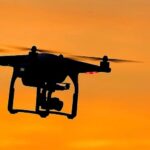
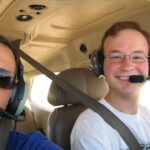
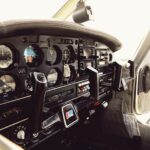
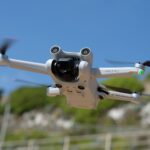
Leave a Reply